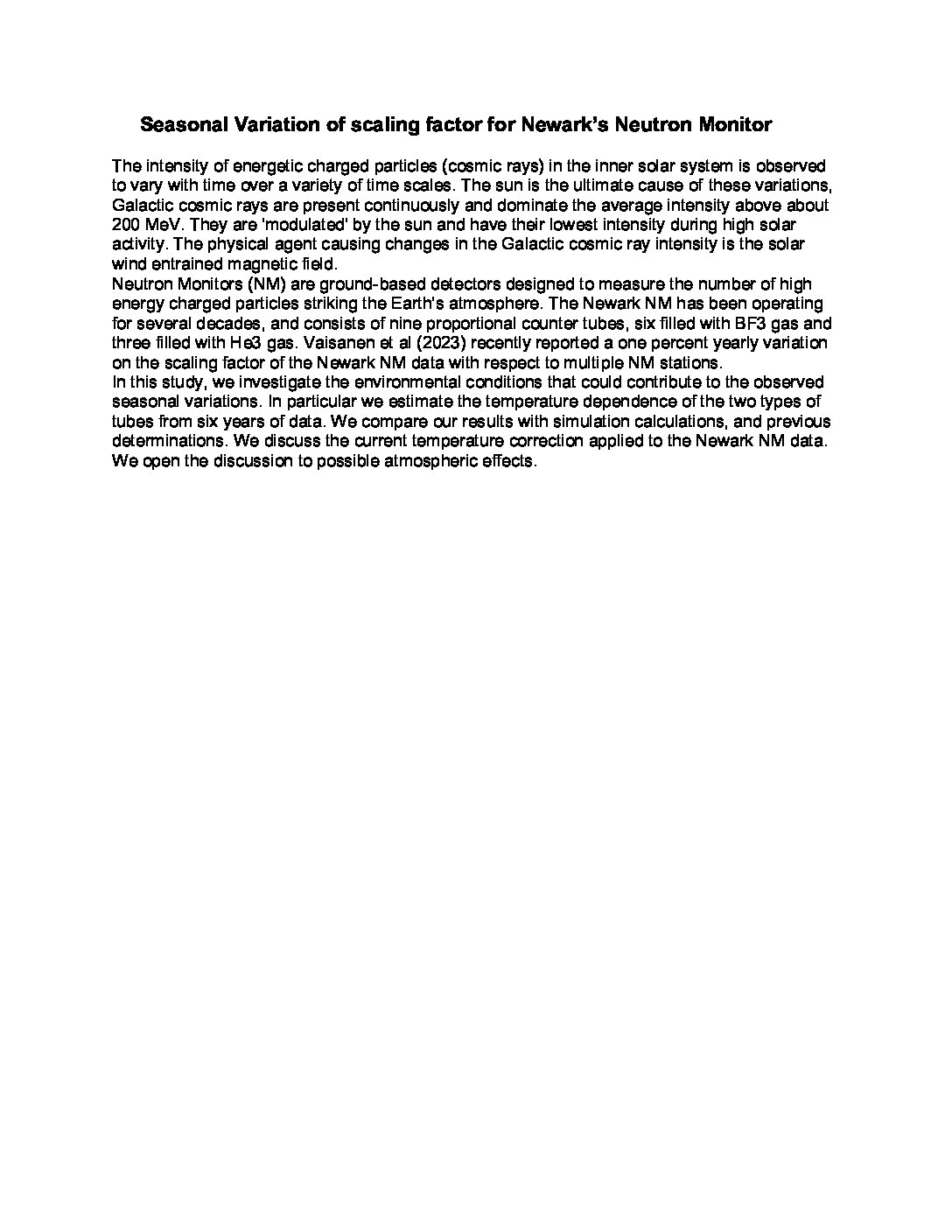Authors: Razieh Ghamari (University of Delaware), John Clem (University of Delaware), Paul Evenson (University of Delaware), Pierre-Simon Mangeard (University of Delaware), Chanoknan Banglieng (Rajamangala University of Technology)
Seasonal Variation of scaling factor for Newark’s Neutron Monitor
The intensity of energetic charged particles (cosmic rays) in the inner solar system is observed to vary with time over different time scales and our dynamical sun is the primary source of these variations. The continuous flow of Galactic cosmic rays (GCR) entering the solar system represents the bulk of charged particles above about 50 MeV. As they enter the solar system, GCR encounter the outward flowing solar wind, which is a hot plasma emanating from the sun. The solar magnetic field is embedded in the solar wind, and any turbulence present in the solar wind can scatter GCRs. The greater turbulence the greater the scattering. During high solar activity periods, when the sun spot numbers are high. the population of high turbulence regions in the solar system are greater, consequently the intensity of GCR reaching Earth is reduced. This causes an anti-correlation between sunspot numbers and GCR intensity also called Solar Modulation. The effect produces a 11year variation, however there are other mechanisms that can produce different GCR variations. Neutron Monitors (NM) are ground-based detectors designed to measure the number of high energy charged particles striking the Earth’s atmosphere. The Newark NM has been operating for several decades, and consists of nine proportional counter tubes, six filled with BF3 gas and three filled with 3He gas. Vaisanen et al (2023) recently reported a one percent yearly variation on the scaling factor of the Newark NM data with respect to multiple NM stations.
In this study, we investigate the environmental conditions that could contribute to the observed seasonal variations. In particular we estimate the temperature dependence of the two types of tubes from six years of data. We compare our results with simulation calculations, and previous determinations. We discuss the current temperature correction applied to the Newark NM data. We open the discussion to possible atmospheric effects.


